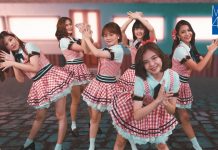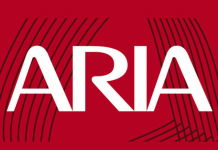Rod Laver Arena is a tennis stadium that is part of the Melbourne Park complex located in Melbourne, Victoria, Australia, and has been the main venue for the Australian Open in tennis since 1988, replacing the ageing Kooyong Stadium. Originally called National Tennis Centre at Flinders Park or Centre Court, the arena’s name officially changed in January 2000 to honour Rod Laver, a three-time winner of the Australian Open and one of world’s greatest tennis players. The arena was finished in 1988 with a seating capacity of 15,000. The venue currently attracts over 1.5 million visitors per year.
About
The Arena features a retractable roof allowing competitors to continue play during rain or extreme heat. It is the centrepiece of Melbourne Park’s Tennis Centre, and besides tennis, the arena hosts motorbike super-crosses, music concerts, conferences, World Wrestling Entertainment events (since 2003), and ballets.
Rod Laver Arena was the centrepiece of the 12th FINA World Aquatics Championships, which were held from 17 March-1 April 2007. A temporary swimming pool, named the Susie O’Neill Pool after Australian swimming champion Susie O’Neill, was built to allow this to happen.
It hosted a World Championship Wrestling event in October 2000. The Rod Laver Arena played host to the gymnastics competition in the 2006 Commonwealth Games.
Rod Laver Arena is equipped with the Hawk-Eye electronic system which allows tennis players to challenge the umpire’s decision on calls made throughout championships.
On 3 April 1992, the arena became the home of Melbourne basketball when the Melbourne Tigers defeated the Canberra Cannons 112-104. The arena was also home to the South East Melbourne Magic (later renamed the Victoria Titans in 1998 after merging with the North Melbourne Giants) with both teams attracting some of the largest crowds in the history of the NBL. Rod Laver Arena was also the site of the first ever “outdoor” pro basketball game in Australia when the Magic hosted the Adelaide 36ers on 31 December 1997 with the roof open.
The largest basketball crowd at Rod Laver Arena was set in 1996 when 15,366 attended a local derby game between the Magic and Tigers while the 1996 NBL Grand Final series, also between the Magic and Tigers, saw the NBL’s largest ever single game Grand Final crowd when 15,064 watched the Magic defeat the Tigers 88-84 in game two of the three game series.
1992 saw the first time two teams from the one city had reached the NBL Grand Final series when the Magic faced fellow Melbourne Park tenants the Tigers. With all games being played at the leagues largest venue a record aggregate of 43,605 (average 14,535) fans saw the Magic win their first championship two games to one, coming back to win games two and three 115-93 and 95-88 after losing game one 98-116.
In all, Rod Laver Arena hosted 287 NBL games including NBL Championship deciders in 1992, 1996, 1997 and 1999, and played host to its last game in April 2000 before Hisense Arena opened in 2000 and became the new home of Melbourne Basketball due to the continuing rising cost of staging games at the venue.
In 2009, the arena polled 9th out of 50 worldwide top arenas for first-quarter ticket sales, making it the second highest ticket selling venue in Australia, second to Sydney’s Acer Arena, which placed third. In 2012, the arena became Australia’s highest selling venue and 4th in the world, based on 2011 ticket sales.
Surface
From 1988 until 2007, the surface of the court in the arena was Rebound Ace, which was coloured green and known to favour serve and volley players. The surface was also blamed for many injuries in the Australian Open, with many players claiming that the surface became sticky in hot weather, making it difficult to play on.
In 2008, the surface was changed to Plexicushion, which is coloured blue. The surface is similar in properties to DecoTurf, the surface used in the US Open. This has more cushioning and more “give” than Rebound Ace. The change of surfaces gained a mostly positive reaction from players, as the surface is said to be easier to play on than Rebound Ace.
It has also had a temporary grass court in use, during the 1993 Davis Cup quarterfinals, 2001 Davis Cup final and the 2003 Davis Cup final.
Other uses
The arena is frequently used as a venue for music concerts.
American singer P!nk performed a record breaking 18 concerts at the venue in the summer of 2013 with her Truth About Love Tour, beating her own record of 17 shows from the Funhouse Tour in 2009. She is currently the artist who hold the record for most shows at the venue.





















